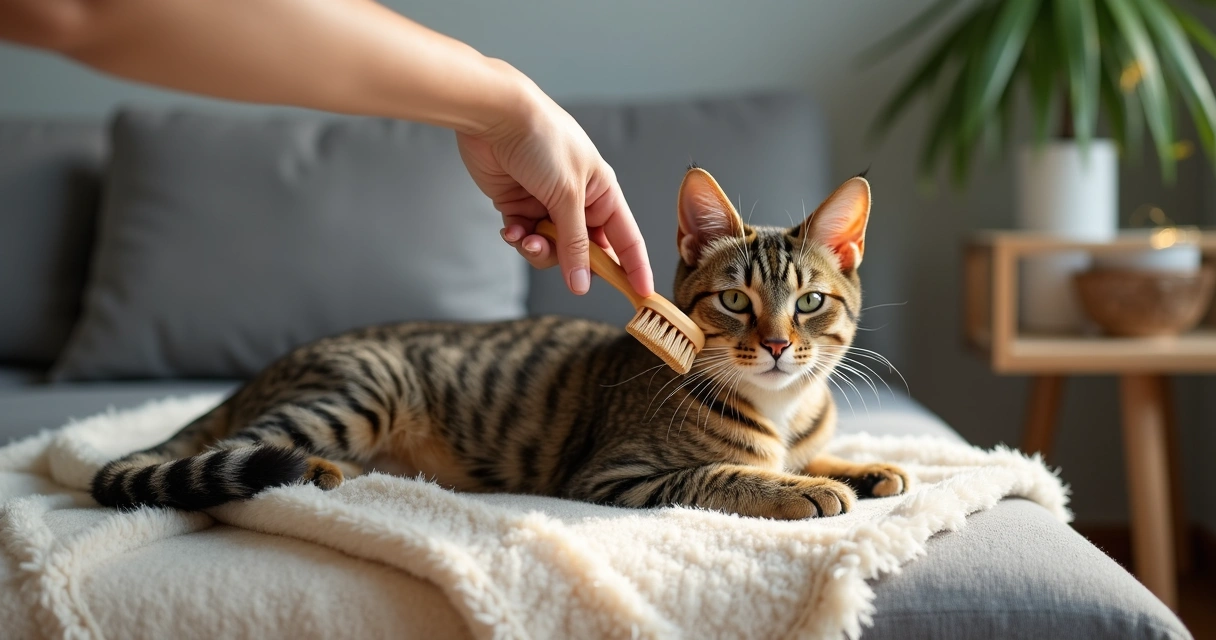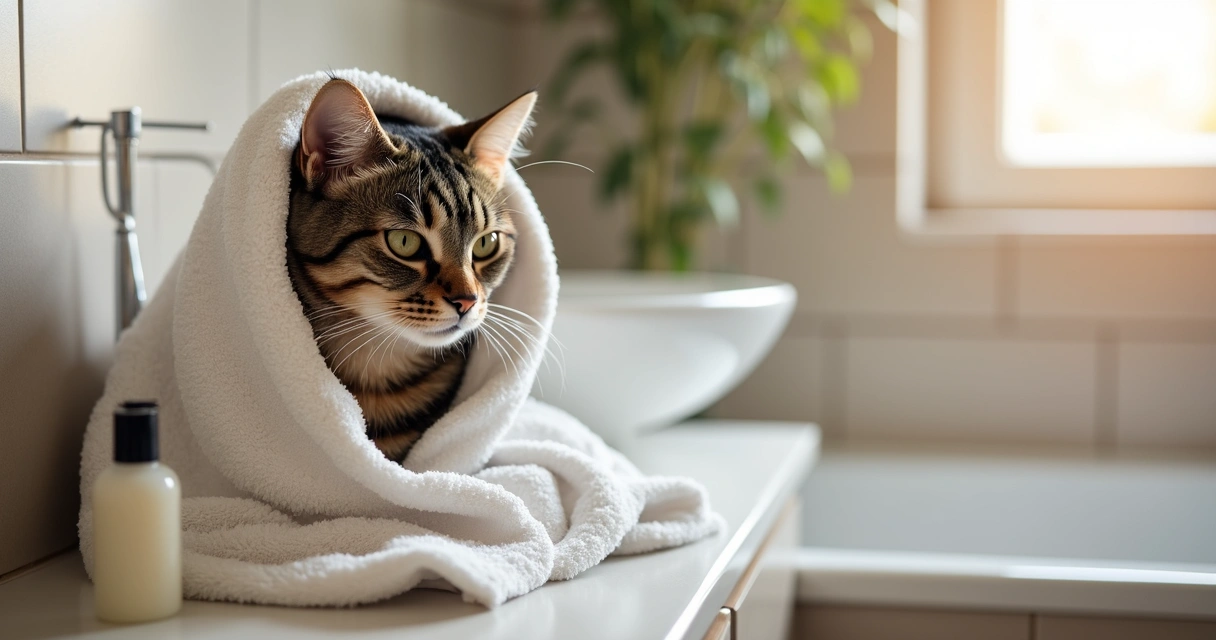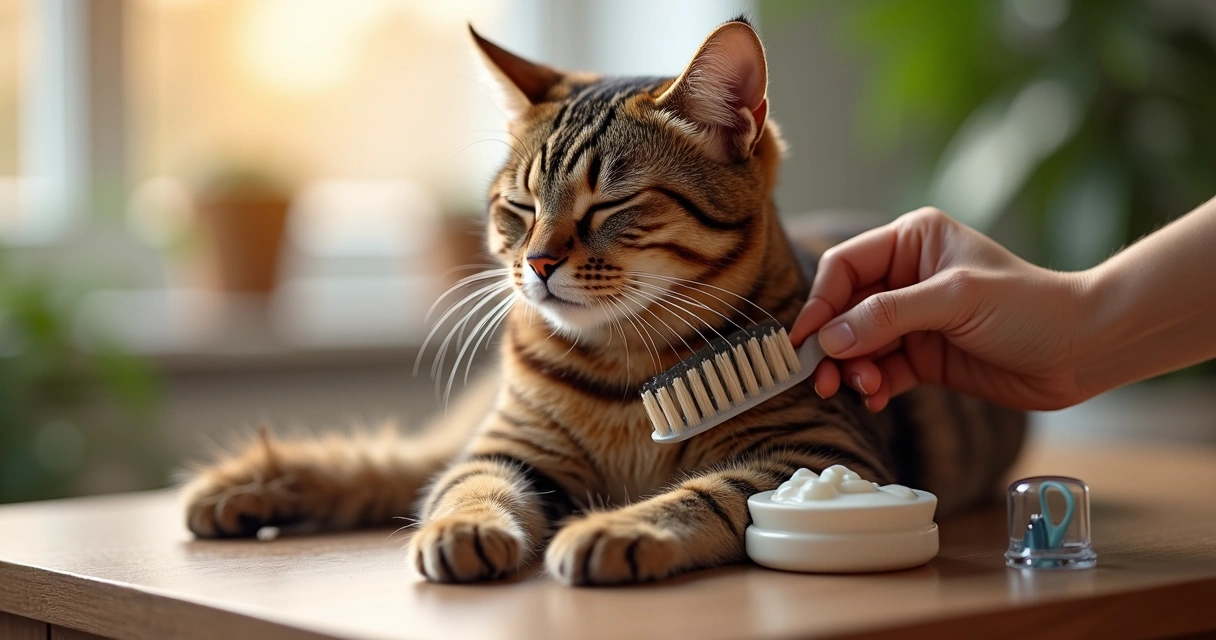I love my cat. I do not love the tumbleweeds of fur that drift under the sofa. If that sounds familiar, take a breath. Shedding is normal, even healthy, but it can be managed with a few steady habits. In Gloucester, MA, the team at Dogtown sees this every day with both short and long coats. With the right tools, a calm routine, and a bit of patience, your home can feel lighter and your cat can feel better.
Why do cats shed so much? Seasonal changes have a role, indoor heat can trigger more shed, and stress adds its own layer. Some of it is simply how their skin renews. The trick is to remove loose hair before it floats onto your clothes, while keeping the skin comfortable and the coat glossy.
Less hair. More cuddles.
The 8 tips that make the biggest difference
Brush daily, but match the brush to the coat. The most direct way to reduce shedding is regular brushing. Guidance from The Environmental Literacy Council notes that brushing removes loose hair, spreads natural oils, and boosts circulation. Use a slicker brush for mats and heavy shed, a grooming rake for double coats, and a rubber curry brush for short-haired cats. In peak shedding seasons, go daily. On quiet weeks, three to four times can still help a lot.

Keep sessions short and sweet. Five to ten minutes is enough for most cats. I set a tiny timer so I do not push my luck. End on a treat or a favorite toy. Stop before your cat gets cranky. Tomorrow is another chance.
Comb in layers, not just on top. Try line-combing. Lift a thin layer of fur with your fingers and comb the section beneath, then move upward. This reaches the undercoat where shed hair hides. Be extra gentle near the chest, belly, and behind the ears. If you hear tugging, pause. Re-angle the comb. Add a bit of detangling spray made for cats if needed.
Bathe only when needed, then dry fast. Baths can help release dead hair, though most cats do not need them often. The Environmental Literacy Council notes that occasional baths are fine, but not required unless the coat is dirty or greasy. If you do bathe, use cat-safe shampoo, lukewarm water, and a non-slip mat. Towel dry right away. A quick brush as the coat dries lifts even more loosened hair.

Feed for skin and coat health. A balanced diet supports hair growth cycles. Many cats do well with omega-3s from fish oil, but talk with your vet about the right dose. Hydration also matters. Wet food can help, and some cats drink more with a wide bowl. When the skin is happy, shedding feels easier to manage.
Treat mats early and safely. Small tangles can turn into tight knots that pull on the skin. Do not cut mats with scissors, since skin can hide inside. Work gently with a mat splitter or a wide-tooth comb, and keep sessions tiny. If the mat is stubborn, the cat grooming team at Dogtown can remove it without stress, then set up a coat plan for the season ahead.
Shape the home to help you. Washable throws on favorite nap spots catch most hair. A soft grooming glove near the couch makes quick swipes easy. Keep humidity moderate so the coat does not dry out too much. A vacuum day each week is fine. Perfection is not the goal. Comfort is.
Know when to call a pro. Excess hair, bald patches, itch, or a dull coat can point to health issues. A vet check makes sense if shedding seems sudden or strange. For steady care, a pro groomer can do a deep brush, sanitary trim, and gentle bath that reset the coat. At Dogtown in Gloucester, MA, you can book full grooming services or a simple brush-out that fits your cat’s mood. Some cats relax more in a quiet, cat-focused space. Others prefer short, regular home sessions. Both paths work.
Small routines that add up
I find the rhythm matters more than the tool. A tiny brush every day beats a marathon once a month. Pair grooming with a snack or a window-bird show. If your home has both cats and dogs, Dogtown’s day camp for dogs can give your dog a busy day while you set a calm grooming time for the cat. And if you are traveling, boarding options keep routines steady, which helps the coat too. Some cats even warm up to handling with a bit of practice, and yes, the training team can coach you on low-stress handling that makes brushing easier.
I will admit, some days I skip it. Life happens. Then I brush an extra minute the next night and we get back on track. Hair sheds. Love stays.
Make it easy. Keep it kind.
Final thoughts
Cat grooming does not have to be a battle. With the right brush, short sessions, and a calm plan, shedding shrinks. Your cat feels comfy, your floors look cleaner, and your bond grows a little deeper. If you want hands-on help or a fresh start, Dogtown offers care designed for the joy and well-being of your pet, from routine brush-outs to spa days. Book your cat’s next visit or schedule a quick assessment to see what fits best at our Gloucester location.
Ready to see less fur on the couch and more shine on your cat? Reach out to Dogtown to learn more about cat grooming, full-service grooming, or set up a plan that works for your home and your pet.
Frequently asked questions
How to reduce my cat’s shedding?
Brush often, match the tool to the coat, and keep sessions short. Daily brushing during heavy shed seasons helps most. Support skin with good food and hydration. Add washable throws on favorite spots. If mats or heavy shed persist, schedule a pro grooming reset.
What brush is best for cat grooming?
Use slicker brushes for mats and loose undercoat, grooming rakes for double-coated cats, and rubber curry brushes for short hair. Guidance from The Environmental Literacy Council explains how different tools fit different coats and why routine brushing works.
How often should I groom my cat?
Aim for 5 to 10 minutes most days, especially in spring and fall. Long-haired or double-coated cats may need daily sessions. Short-haired cats can do well with several times a week. Baths are occasional unless the coat is dirty or greasy.
Is professional cat grooming worth it?
Yes when shedding feels nonstop, mats form, or your cat resists home care. A pro can safely remove tangles, do a deep brush, and reset the coat. At Dogtown, cat-focused sessions are gentle and tailored, which often makes long-term home care easier.
Do short-haired cats need grooming?
They do. Short coats still shed and can get dander buildup. A rubber curry brush or soft slicker a few times a week removes loose hair and spreads natural oils. Quick, positive sessions keep the coat glossy and your furniture cleaner.





